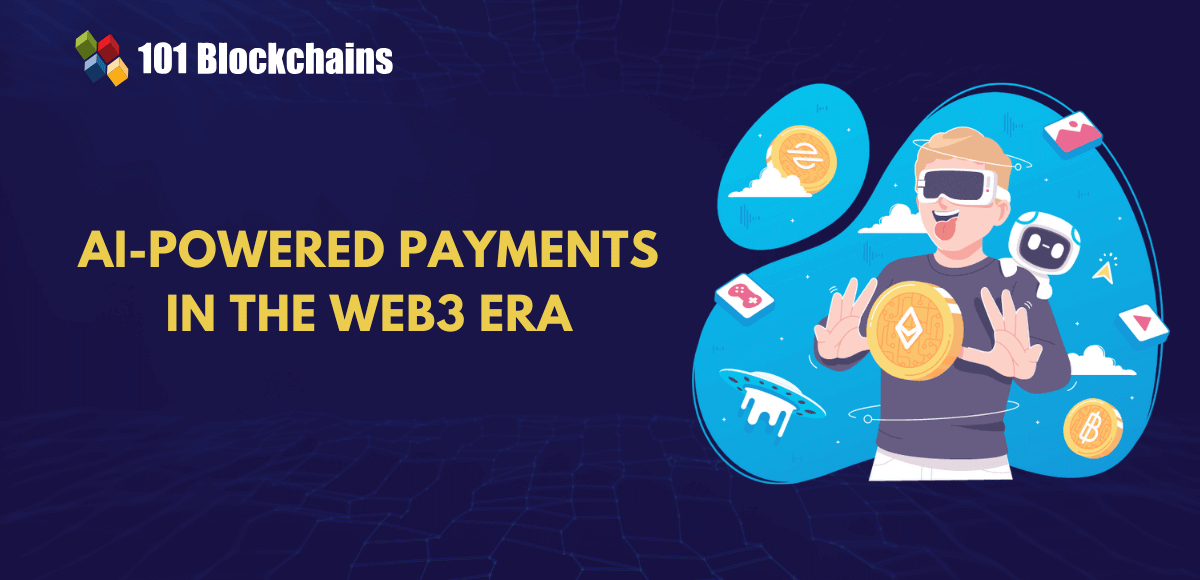Learn how blockchain truly works, master key definitions, and uncover what makes smart contracts so "smart." Dive into the fundamentals, gain valuable insights, and start your blockchain journey today!

- Web3
James Howell
- on January 20, 2023
An Introduction to Web3.js Tutorial
Web 3.0 or web3 is a lucrative domain for app development right now. Why? It is the third generation of the web and introduces the concept of a decentralized and semantic web. Therefore, the use of libraries such as web3.js has become important for blockchain developers. The detailed explanation for a web3.js tutorial could help you identify the best ways to create a decentralized app by using JavaScript.
In simple words, the definition of web3.js would paint it as a JavaScript library you can use for interactions with the Ethereum blockchain. The following post will help you learn more about the web3.js tutorial in detail and the different actions you can take to use web3.js for dApps.
What are Web3 and JS?
Before you seek a Web3 js example, you must familiarize yourself with the individual terms, ‘web3’ and ‘js’, before finding a suitable explanation for the web3.js tutorial. Any beginner in the field of web3 development must understand that web3 development practices are similar to web2 development practices. On the other hand, you can use programming languages such as JavaScript, which you commonly use in web2 development practices.
However, if you are a complete beginner in the field of development, you must learn about web3 and JS before exploring the web3 JavaScript tutorial or guide. The knowledge of JavaScript offers a strong foundation of knowledge for developers and serves as a flexible way to start web3 programming.
The definition of web3 is a complicated task for many reasons, especially considering that many experts have defined it on their own terms. One of the common impressions of web3 paints it as a stage in the evolution of the web. The earlier generations of the internet, i.e., web1 and web2, introduced new and effective methods for browsing the web. With the initial phase of the internet in web1, users could access only static web pages and did not have any interactive elements. Subsequently, web2 arrived with the introduction of social media and eCommerce sites. Web2 still continues as the dominant principle for websites used all over the world, albeit with concerns of centralization.
The problems of centralization with web2 have led to its criticisms, albeit with promising advantages of dynamic web experiences. For example, negative drawbacks of decentralization include a lack of privacy and transparency. At the same time, centralization also introduces significant problems in security with single points of failure. Web3 aims to solve these problems by using decentralization through blockchain technology.
Now, you might be curious about the answers to “What is web3 in JavaScript?” and the reasons for choosing web3.js. Let us begin with a basic overview of JavaScript. It is an object-oriented programming language suited for web development. JavaScript is one of the common tools used in web2 development and serves exceptional functionalities for web3 development. For example, it has been called the “third layer” of the web, considering its ability to update CSS and HTML code. JavaScript also provides the facility for integrating interactive elements in websites and applications.
On top of it, JavaScript follows a text-based design that offers an intuitive approach to learning and using the language. Therefore, the features of JavaScript could help in enabling better sophistication in user experiences, thereby fostering user engagement.
Understand more about blockchain technology and how it is developed by enrolling in one of the most demanded Blockchain Certification courses.
Definition of Web3.js
The individual description of web3 and JS serves as an important highlight for understanding the JavaScript web3 connection. However, you must also understand the web3.js library, which you can use for different functions. First of all, you need to note the distinct highlights for developing blockchain applications through the Ethereum blockchain. The important functions in developing Ethereum-based blockchain applications include smart contract development and website development. Smart contract development is essential for crafting code with a Solidity programming language, which you would deploy on the blockchain.
On the other hand, you must also develop websites that can interact with the blockchain. The websites or clients would involve code that could read and write data from the blockchain through smart contracts.
Web3.js can help you address the second important function in developing Ethereum-based blockchain applications. The answers to “What is Web3 used for?” would draw attention toward the development of clients or websites for interacting with the Ethereum blockchain. Web3.js is practically a collection of libraries that can help in performing different actions on Ethereum applications. Examples of actions could include sending Ether between accounts, creating smart contracts and reading and writing data from smart contracts.
Curious to develop an in-depth understanding of web3 application architecture? Enroll Now in Web3 Application Development Course!
Working of Web3.js
The obvious thing on your mind right now must be pointed at the Web3 JS Github entries for some practical knowledge. However, you need to learn how web3.js works before you start working on dApps or smart contracts. Any web development expert would choose jQuery for making Ajax calls to a web server. However, you can choose web3.js as an alternative for reading and writing to the Ethereum blockchain. You can learn more about the working of Web3.js by understanding how it talks to the Ethereum blockchain.
The explanations for “What is Web3 JavaScript?” would draw attention toward the working of web3.js in enabling communication between clients and the Ethereum blockchain. Web3.js communicates with the Ethereum blockchain by using the JSON-RPC method or a Remote Procedure Call protocol. Ethereum is a decentralized peer-to-peer network of nodes storing a copy of all the data and smart contract code on the blockchain itself. Now, web3.js could help in making requests to individual Ethereum nodes by leveraging JSON-RPC for reading and writing data to the blockchain network. You can think of it as implementing jQuery in JSON API for reading and writing data on a web server.
Excited to learn the basic and advanced concepts of ethereum technology? Enroll Now in The Complete Ethereum Technology Course
Important Dependencies in Web3.js
The introduction to web3.js would also draw attention to the dependencies used in the JavaScript library for web3 development. Dependencies in web3.js are your ideal starting point for web3 development with the assurance of distinct functionalities. The web3.js tutorial would highlight the following important dependencies.
-
Node Package manager
The Node Package Manager or NPM is one of the first dependencies you would need for using web3.js. It is available as a package with Node.js and can help you check whether the node has been installed by visiting the terminal and typing the following command,
$ node –v
The NPM is also helpful for understanding web3 js examples as it can help in the installation of the web3.js library. You can use NPM in your terminal with the following command to install the web3.js library.
$ npm install web3
-
Infura RPC URL
The next important dependency in web3.js refers to the Infura RPC URL. You would need access to an Ethereum node for connecting an Ethereum node and JSON-RPC on the mainnet. You could explore answers for “What is Web3 in JavaScript?” for identifying solutions to this problem. The first method would refer to the use of Geth or Parity for running your own Ethereum node. However, it also implies the necessity of downloading significant amounts of data from the blockchain network for maintaining synchronization.
On the other hand, you can opt for the convenient approach by using Infura for accessing Ethereum nodes without operating one on your own. Infura can offer you the functionalities of a remote Ethereum node without any costs. You can access Infura remote node by signing up alongside obtaining the API key and RPC URL associated with the network that you wish to connect with. The Infura RPC URL might look like the following example,
https://mainnet.infura.io/YOUR_INFURA_API
Check Account Balances with Web3.Js
The theoretical description of important dependencies of web3.js and its basic functions offers a good start to the tutorial. However, a web3 JavaScript tutorial must also explore the practical applications of web3.js. Do you want to learn how to develop web3 applications with web3.js? You must learn about the essential steps for the same before trying out web3.js library in practice. The first step in developing with web3.js would point at activation of the Node console by typing the following command in the terminal.
$ node
After opening the Node console, you have to require web3.js by using the following command.
const web3 = require(‘web3’)
The above step helps you obtain a variable that can help you with the creation of a new web3 connection. Prior to generating a web3 connection, remember to assign the Infura RPC URL to a variable like
const rpcURL = “https://mainnet.infura.io/YOUR_INFURA_API”
You should use the actual Infura API key, and then you can start a new web3 connection by using the following command.
const web3 = new Web3(rpcURL)
As you need a live web3 connection for talking to the Ethereum mainnet, you can use the connection for checking the account balance. It can help you identify the amount of Ether in an account as you can check the balance by using “web3.eth.getBalance()”. Subsequently, you can assign an address to a variable as follows,
const account = “account address”
Now, you can find “What is Web3 JS used for?” by checking the account balance with the following code.
web3.eth.getBalance(address, (err, wei) => {
balance = web3.utils.fromWei(wei, 'ether')
})
The description of the code for checking account balances can offer a clear impression of how web3.js works. You can check the balance by calling the “web3.eth.getBalance()” function. It would accept a callback function, featuring two distinct arguments alongside the error as well as the balance. The example code ignores the error comment while referencing the balance in the ‘wei’ argument.
The explanation for JavaScript web3 uses cases points to how Ethereum expresses its balances in Wei, a subdivision of Ether. You can convert the ‘wei’ balance to ETH by using the “web3.utils.fromWei (wei, ‘ether’)” command. In addition, you can also download many other code examples from Github. The full documentation of web3.js can offer vital support for understanding what you can do with the library.
At the same time, it is also important to note that web3.js is still under active development. You can access the web3 JS Github repository for following the progress of the JavaScript library. In addition, you can read through the code examples for obtaining a better understanding of the library and its functionalities.
Reading Smart Contract Data with Web3.js
The next important example in a tutorial on web3.js JavaScript library would refer to reading smart contract data. You must rely on two distinct aspects for reading data from smart contracts by using web3.js. The answers to “What is Web3 JavaScript?” would reflect more than explaining it as a JavaScript library. You can read smart contract data with the help of a JavaScript version of the smart contract you want to read. The second important requirement for reading smart contract data refers to the method for calling smart contract functions during data reading.
You can create a JavaScript version of smart contract by using the “web3.eth.Contract()” function. The function would need two specific arguments, with one intended for smart contract ABI and the other one for smart contract address. Smart contract ABI or Abstract Binary Interface is practically a JSON array providing description of the working of a particular smart contract. Once you have configured the smart contract ABI, you could work on generating a comprehensive JavaScript representation of the smart contract.
In the next step of this web3 JS example, you must call smart contract functions for reading data. You can find all smart contract functions listed in the ‘contract.methods’ namespace for the concerned web3 contract. Therefore, the function can help you in calling any function you can implement with the smart contract.
Build your fluency in Web3 and develop decentralized solutions with the world’s first Web3 Expert Career Path with quality resources tailored by industry experts Now!
Final Words
The introductory guide on web3.js suggests that the JavaScript library for web3 development offers a simple tool for creating web3 applications. Web3.js primarily functions on enabling communication between websites or clients and the Ethereum blockchain. The functionalities of web3.js explained in the web3 JavaScript tutorial offer a basic impression of what you can achieve with it. As a popular JavaScript library for web3 development, web3.js offers the assurance of better engagement and simpler user experiences. With the power of JavaScript in web development, web3.js could strengthen the capabilities of developers by significant margins. Learn more about web3.js code examples in detail and their different uses in smart contract or web3 dApps development now.
*Disclaimer: The article should not be taken as, and is not intended to provide any investment advice. Claims made in this article do not constitute investment advice and should not be taken as such. 101 Blockchains shall not be responsible for any loss sustained by any person who relies on this article. Do your own research!







